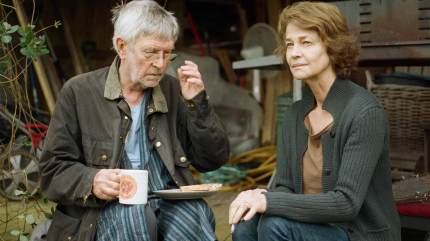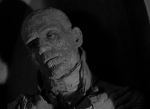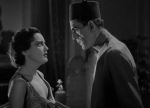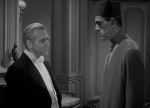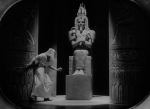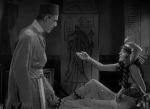
Today’s cinema adventure: The Mummy, Karl Freund’s 1932 horror classic about an ancient Egyptian priest, returned to life by the power of a sacred spell after his tomb is discovered by archaeologists, and his efforts to reunite with the reincarnated soul of the woman he loved thousands of years before. One of the three iconic monster movies- with Dracula and Frankenstein– made by genre-champion Universal Studios during its golden age of the early thirties- it was the only one not derived from a pre-existing literary source, instead being developed in a deliberate effort to capitalize on the then-current craze for Egyptology and the sensationalistic popularity of the “Curse of King Tut,” of which rumors had been circulating since the discovery of the young Pharaoh’s tomb, ten years before, and the seemingly mysterious deaths of several of those who participated in its excavation. It was also intended to capitalize on the newfound stardom of Boris Karloff, who had been a virtual unknown barely a year before, but thanks to his success as the monster in Frankenstein was now so popular that he could be billed in the movie’s ads by his surname alone (“KARLOFF is THE MUMMY“) and still guarantee the film’s status as a box office hit.
Charged by Universal studio chief Carl Laemmle, Jr. with the task of finding a suitable story for an Egypt-themed thriller, story editor Richard Shayer came up empty-handed; drawing inspiration from the real-life history of Alessandro di Cagliostro, an 18th-Century occultist and charlatan who claimed- among other things- to have used arcane mystical practices to prolong his life for centuries, he teamed with writer Nina Wilcox Putnam to write a story treatment entitled Cagliostro. Laemmle was pleased with the essence of their narrative, but still determined to make his Egyptian picture, he brought in Dracula and Frankenstein screenwriter John L. Balderston to transform the idea into a script that suited his needs. The Italian magician became an Ancient Egyptian priest, and the rest of the details fell into place. The movie begins in 1921, at the base camp for the British Museum’s archaeological expedition in Egypt. Renowned Egyptologist Sir Joseph Whemple and his young assistant, Ralph Norton, have discovered the 3000-year-old Mummy of a High Priest named Imhotep, buried in an unmarked tomb with a mysterious box inscribed with a curse which promises destruction to any who open it. Whemple has called in his old friend, psychiatrist and occult expert Dr. Muller, as a consultant; the doctor recommends that both mummy and box be returned to the earth and forgotten, but while the older men debate the issue outside, the younger Norton cannot contain his curiosity, and he opens the box. There, he finds an ancient scroll, and as he begins to read out the hieroglyphs it contains, the mummy of Imhotep awakens. The sight of the ancient corpse come to life drives the young archaeologist instantly mad, and the mummy leaves him crumpled on the floor, hysterical, as it takes the scroll and wanders slowly out into the desert night. Ten years later, the disappearance of these artifacts is still a mystery, and a new British expedition, in which Whemple’s son Frank (who has followed in his father’s footsteps) is involved, is having scant luck finding anything of note in their digging- until Ardath Bey, an Egyptian scholar with an odd, aloof manner, arrives unexpectedly and leads them to the undiscovered tomb of Princess Anck-es-en-Amon. The British soon have the Princess and her relics on display at the Cairo Museum, reaping the scientific rewards of their find- but the mysterious Bey has his own purposes. He is, in fact, Imhotep himself, and he has spent the decade since his resurrection planning to use the stolen scroll to restore life to the Princess- his former love- so that they may at last be reunited. Using spells and incantations in the museum after hours, he summons the reincarnated soul of Anck-es-en-Amon- now inhabiting the body of young, beautiful Helen Grosvenor (coincidentally, a patient of Dr. Muller’s)- to come to his side. Muller, however, immediately surmises the truth behind the girl’s strange attraction to Bey, and with the help of young Frank Whemple, attempts to thwart the ancient priest’s dark purpose by taking her under his protection. Imhotep’s mastery of the scroll, however, makes him a powerful adversary, and with it he exerts his will to break down the mortals’ defenses, despite Muller’s vast knowledge and understanding of these archaic forces- and despite the love that is blossoming between Frank Whemple and the object of his millennia-old obsession.
I’ve said it before in relation to other horror films from this classic era, and perhaps it seems an obvious point hardly worth mentioning at all, but for today’s audiences- conditioned as we are to the oceans of gore and unspeakable violence that permeates the genre and so familiar with its standard conventions of plot and character that they have achieved for us the level of cliché- The Mummy offers little in the way of genuine thrills or chills. The script is laden with clunky exposition, the necessary conditions of the plot are unconvincingly established and accepted by rote, and the most directly terrifying moments are portrayed either by sound effects or reaction shots as they take place offscreen. Its plot is formulaic, borrowing more than a little from Dracula– unsurprisingly, perhaps, considering that this film is a product of the same studio, written by the same screenwriter, and directed by the previous movie’s cinematographer- with its scenario of an ancient horror using arcane powers to lure a young and vital female to the doom of an unholy union. Even so, The Mummy can scarcely be dismissed as an irrelevant or inferior work; indeed, dated though it may seem to the casual viewer today, it was and continues to be a vastly influential film, helping to define the genre at least as much as the others in the Universal canon and casting its dusty shadow over every archaeological fantasy film to follow, right on down to Spielberg’s Indiana Jones movies and beyond. It is every bit the equal of Frankenstein and Dracula in terms of artistry and surpasses them in technical prowess, setting new standards in makeup and special effects. More importantly, in terms of lasting effect, its then-novel conceit of a resuscitated mummy has become an iconic pop culture trope, joining the ranks of such legendary monsters- with lengthier pedigrees- as vampires and werewolves as inspiration for imaginative tales and Halloween costumes the world over.This last item will no doubt be the source of most interest for the casual modern movie viewer, a chance to see the original incarnation of a much-loved and imitated celluloid spook that has terrorized everyone from Abbot and Costello to Scooby-Doo and his gang. Painstakingly executed by make-up pioneer Jack Pierce (who also crafted Karloff’s frightening countenance for his star-making role in Frankenstein), the mummified Imhotep was created in an excruciating 8-hour process involving clay, cotton, spirit gum, and linen. Karloff went before the cameras for another 5 hours, and then spent 2 hours having the make-up removed; the actor- who famously complained to Pierce that in all his attention to intricate detail, he had nevertheless forgotten to include a fly- later called it the most “trying ordeal” of his life. He had only to endure it once, however; Imhotep is seen in his fully-wrapped mummy regalia for only few minutes, during the opening sequence in which he is studied and inadvertently revived, and the character spends the rest of the film in the simpler- but no less effective- make-up required to give him the desiccated, shriveled look one might expect from a man who has spent three millennia beneath the desert sands. This brief appearance may disappoint those hoping for a whole movie’s worth of moaning, shambling, bandage-wrapped menace- a device not introduced until several years later, when the studio re-introduced the character for a series of inferior, unrelated pseudo-sequels- but it offers a classic look for this particular ghoul that has never been supplanted or surpassed, and it was enough to electrify audiences in 1932; indeed, the chilling moment when Karloff slowly opens his eyes for the first time remains one of the most singularly ominous few seconds in the history of the horror genre.
It is Karloff’s performance, too, that gives The Mummy its classic stature, for without his elegant presence in the title role the film would be little more than a stylish-but-hollow melodrama; though his character is less directly menacing than Dracula and less brutal than the creature of Frankenstein, Karloff nevertheless infuses him with a palpably terrifying power, exuding the absolute confidence of invincibility with every underplayed line. Always a master of physical performance, his brittle, slow and deliberate movement gives us not only a sense of Imhotep’s antiquity, but emphasizes a soft and careful gentility that contrasts the destructive intent that hides beneath his staid persona. It’s a difficult task to convincingly portray the ability to enslave and destroy with the power of a mere thought, but Karloff does so. More crucial than that, however, is his gift for revealing the tender soul that dwells inside the monster; though he makes clear the treacherous nature of Imhotep, and leaves no doubt of his callous disregard for the suffering of mere mortals, so too does he show, with utmost sincerity and simplicity, the deep and desperate pangs of love that have driven him across centuries and motivated him to defy the gods themselves in order to recapture the woman he has lost. Karloff gives us a villain who is, at his most private core, an almost touchingly naive romantic- something to which we can all relate, at some level- and therefore one we can feel sorry for, particularly in light of the vaguely smug sense of anglo-centricism, a product of the less-culturally-sensitive era in which the film was produced, projected by the protagonists. It’s a masterful performance, and one that takes its place alongside the other classic characterizations that made this gifted actor into a screen legend well-known and respected even today, when so many of his fellows from the early days of cinema have long faded into obscurity.
Sharing the screen with Karloff are a handful of other capable performers of the time, an A-list selection of actors who help, in their own ways, to make The Mummy stand the test of time. Most notable, of course, is Edward Van Sloan, the horror stalwart who here completes his triumvirate of monster-fighters (having previously portrayed the title character’s mentor in Frankenstein and the intrepid vampire-hunter, Van Helsing, in Dracula) as Dr. Muller; wise, intense, and steely at the core, he cements his own legend with a solid and believable performance that may not be as showy or compelling as those offered by some who have followed his footsteps in similar roles, but nonetheless sets the standard for this indispensable archetype of the genre. The most memorable supporting player, however, is perhaps Bramwell Fletcher, as the unfortunate and overly-enthusiastic archaeologists’ assistant who unwittingly speaks the words which return Imhotep to the world of the living; as the central figure in the film’s most famous sequence, he is burned into popular consciousness by virtue of the chilling, hysterical laughter into which he descends as the sight of the reanimated relic turns his mind to permanent jelly.
Much of the authenticity of the film’s conceit, though, hinges on the performance of Zita Johann, the exotic and beautiful actress with the difficult task of portraying Helen, a young woman rooted simultaneously in both the modern and the ancient world; she exudes warmth and intelligence even as she is convincingly mesmerized by her ancient lover’s mystical powers. and she successfully conveys both the sophisticated candor of a contemporary woman and the haughty formality of an Ancient Egyptian princess. She was no doubt aided with the latter by a deeply-held personal belief in reincarnation; indeed, she protested vehemently when a lengthy flashback sequence, portraying her character’s journey through the centuries in a series of lives during different historical periods, was cut from the film in an effort to reduce its running time- though sadly, her efforts to have the scenes reinstated were unsuccessful and the footage has been long-since lost. Even so, her contribution to The Mummy is a performance worthy of being matched with the great Karloff, from an actress whose screen career- abandoned after only five films for a life in the theater, working with then-husband John Houseman and his cohort Orson Welles- was all too brief.
The third corner of the movie’s bizarre love triangle is David Manners, a popular and respected stage-actor-turned-movie-star who had played essentially the same role in Dracula, a year earlier; while the character is not particularly compelling and is mostly required to perform the obligatory acts of passionate (if ineffectual) heroism inherent to the film’s formula, this handsome, likable actor gives him much more personality than many of the others who have played his equivalent in countless creature features. Manners, though primarily known for his twin roles in these iconic horror films, also appeared with Katharine Hepburn in her screen debut (A Bill of Divorcement) as well as several other important leading ladies of the time; he was a star in the making, well-liked by colleagues who spoke very highly of his professionalism and supportive attitude- but, like his female co-star in The Mummy, he retired young from Hollywood, saying it was “a false place.” He moved to a ranch in Victorville, California with his life partner, writer Bill Mercer, and returned to a successful stage career; at one point in the 1940s, he worked in Maxwell Anderson’s play Truckline Cafe with fledgling actor Marlon Brando, who later said he owed Manners his “entire career.”
The fine cast and artful production values of The Mummy were supervised by director Karl Freund; a legendary cinematographer from Germany, where he had photographed such visually stunning masterworks as The Last Laugh and Fritz Lang’s Metropolis, he had emigrated to Hollywood a few years earlier. Hired to lens Dracula, he had been left in charge of many of the scenes in that film due to director Tod Browning’s frequent absences from the set; consequently, Universal officially gave him the job of directing this follow-up. It proved a wise choice, for Freund approaches the story with a photographer’s eye; wisely recognizing the weakness of the narrative, he relies on mood and atmosphere to carry his film, using an elegant visual style- replete with exotic locales, majestic sets, sumptuous costumes, and gorgeous black-and-white cinematography (executed by Charles Stumar, no doubt under close supervision from Freund himself)- to give us imagery that transcends the plot and transports and unsettles our imagination almost independently of the script. Freund would go on to direct a handful of other films, and photograph many others, but his greatest success would come much later in his career, when he was hired by Desi Arnaz to supervise the photography on the series I Love Lucy; he developed a use of lighting that would allow multiple cameras to shoot the same scene simultaneously, eliminating the need for cutting the action to change angles and thereby allowing for an uninterrupted performance to be filmed in front of a live audience. It was a ground-breaking technique that changed the future of television sitcoms forever, and Freund received much well-deserved acclaim and respect for it, giving him a sizable feather in the cap of an already-illustrious career.
It would be overstating the case to say that The Mummy is a great film, in the sense of other early talkies such as The Public Enemy or All Quiet on the Western Front; it was, and remains, a piece of glossy pulp cinema, a sensationalistic crowd-pleaser aimed primarily at providing scares and making money. It did both in 1932, making it a successful film, whether or not it was a great one. Just because it is, essentially, schlock entertainment, however, doesn’t mean it is not also a fine example of the filmmaking art as it was at the time; indeed, the primal, timeless nature of its subject matter- and even its relatively lowbrow intent- means that it is more easily accessible to modern audiences, playing better today than many of the more prestigious “art” pictures of its day. If nothing else, it’s a treat to look at, but more than that, there is something intangibly resonant about it; perhaps it is its theme of undying love opposed by the inexorable march of time and the irresistible winds of fate, or its evocation of ancient memories buried deep within our psyches through its exploration of reincarnation and arcane magic, but The Mummy, creaky and corny as it may be to our modern sensibilities, still has the power to move us. There are lots of good reasons why this golden-age potboiler remains a classic, worthy of watching for those who have never seen it and of repeated returns for those who have; but the best of these reasons, and the one which makes The Mummy a truly essential piece of cinema, is Boris Karloff. The man had a rare ability to find the monster within us all, and show it to us with the dignity, honesty, and pathos it deserves; he did so many times- and did it well- throughout his long career, even in films far inferior to this and his other early classics. To see him here is to understand why, so many generations later, and despite his association with depraved, monstrous characters, he is still one of those rare actors who can genuinely be called “beloved.”
http://www.imdb.com/title/tt0023245/?ref_=fn_al_tt_2
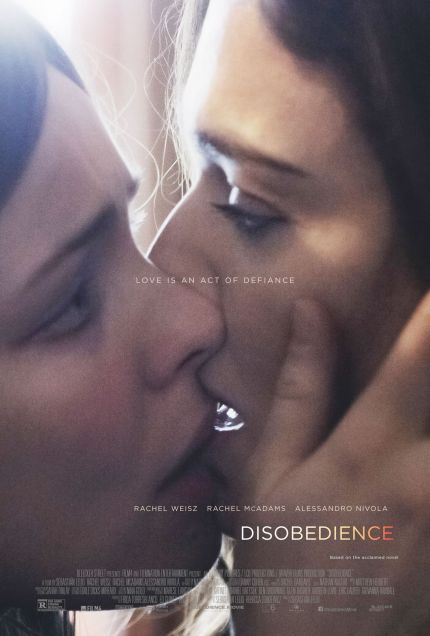














































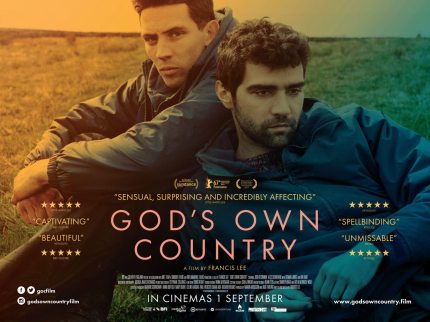














 When Ridley Scott’s dystopian neo-noir sci-fi opus opened in 1982, it was overshadowed at the box office – along with a number of other worthy films – by the juggernaut that was Steven Spielberg’s “E.T.: The Extra-Terrestrial.” Consequently, it was deemed by the then-reigning Hollywood pundits to be a misfire, and critics seemed to echo that sentiment; though praised for its imaginative visual design – now regarded as influential and iconic – and its provocative thematic explorations, it was greeted with middling reviews that, taken together, marked it as an “interesting failure.”
When Ridley Scott’s dystopian neo-noir sci-fi opus opened in 1982, it was overshadowed at the box office – along with a number of other worthy films – by the juggernaut that was Steven Spielberg’s “E.T.: The Extra-Terrestrial.” Consequently, it was deemed by the then-reigning Hollywood pundits to be a misfire, and critics seemed to echo that sentiment; though praised for its imaginative visual design – now regarded as influential and iconic – and its provocative thematic explorations, it was greeted with middling reviews that, taken together, marked it as an “interesting failure.”




















































